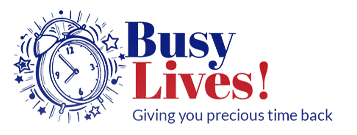
Recruitment Procedures
Recruitment Procedures
This blog post is a sharing of my knowledge and experience of recruiting and interviewing over my years in Education. It incorporates: what went well, what to avoid and the background organisation required to make the whole process run smoothly, which can really make a difference on the day.
As a Head teacher, I recruited over 100 new staff over a number of years at every level of the organisation. This was due to amalgamating two schools, expanding the school to become a large three form entry primary school and, perhaps what I am most proud of, many staff leaving due to career progression.
Sections in this post:
-
Organisational steps for your recruitment process
-
5 tops tips to include on your advert
-
Application forms & templates
-
Communication is key
-
Help
Section 1: Organisational Steps for your recruitment process
Advert
- Confirm content of advert.
- Advertise the post where you believe your target employees are most likely to access.
Initial enquiry responses
- Confirm and use one email account throughout if your business has multiple.
- Send packs out to interested people. Include:
- Thank you for your interest in the post and next steps.
- Application form.
- Job description.
- Job specification.
- Compile an overview of interest received on excel. Include:
- Contact information.
- Date when the application pack was sent to them.
- Date when the applicant has applied.
- Shortlist outcome
- You may wish to track equality measures such as age, gender and ethnic origin.
After the closing date
- Confirm with the interview panel if they would like applications sent electronically or printed out. (Remember if sending electronically, this needs to be secure in order to adhere to GRDP.)
- Create a summary sheet for the panel of the received applications. You can quickly cut and paste this from your excel master you’ve created.
- Send the applications received to the interview panel. Also include in their pack a copy of the advert, JD and Job Specification for their reference.
- Put applications in alphabetical order and assign a letter / number to each. (If the panel have a large number to shortlist this is invaluable for them and help not waste time looking for specific ones from their piles during the shortlisting meeting.)
- Ensure the interview panel have at least five working days to read through the applications to prepare.
- Check all the interview panel are still able to attend both the shortlisting and interview days. Confirm and remind them of the date, time and place for the shortlisting meeting.
- Ask the panel to put the applicants into three categories in their preparation as they read through them: Yes / Maybe / No.
- Write provisional questions and tasks to be used for the interview ready to discuss on the ‘Shortlisting day.’
- Compile a panel shortlisting overview grid if required. This helps to quickly see common trends on who to interview and also demonstrates that equal opportunities has been applied if anyone was ever to challenge you on this.
- Prepare the letters to be sent to applicants inviting them to interview.
- Prepare the letters to be sent to the referees.
On the shortlisting day
- Send invite to selected applicants for interview.
- Send requests for references.
- Decide on the final format of the day and work out timings for the number you are interviewing.
- Top tip: Build in time for refreshment and comfort breaks during the day.
- Finalise the question and tasks for the day.
- Decide if applicants will have access to the questions for ten minutes prior to their formal interview. If you decide to go with this remember to build into the days timings that someone / your hospitality person will need to give them out.
- Check if a buffet lunch has been booked for the panel and book if required.
- Confirm timings and expectations for the day with all members of the panel.
Before interview day
- Collate references under the applicant name – chase if required.
- Confirm attendance from shortlisted applicants.
- Collate a pack for each member of the interview panel with everything they need in the correct order.
- Ensure each of the panel have a collated recruitment pack of the following:
- Timing schedule for the day
- Sets of Interview questions & tasks for the number being interviewed
- Copy of applications in order of interview time
- References
Section 2: 5 tops tips to include on your advert
These look like common sense, but you would be surprised how many adverts miss one or more of these out!
- Location – State your exact location on your advert, being vague may just stop the right person from applying because they don’t know where they are going to travel to and how!
- Hours – Make it clear on your advert the hours you expect your new employee to work each week. If possible state if the timings of the day are fixed or flexible. This can really make a difference and will save both them and the panel time later on in the process.
- Pay – State the salary that they will be earning. Be careful here as the amount is not what it will cost the business with tax, N.I. and pension contributions added on.
- Skill set required – Make it clear what sort of person you are looking for and the key skills or experience that will be vital for the post.
- Communication preference – If there is one format of communication you prefer over another make it clear on the advert. You may not wish to be inundated with phone calls and prefer email or post for instance.
Section 3: Application Forms & Templates
It’s a personal / company preference if you use these or not. I would always say yes!
Why?
- Everyone is clear on the precise information that is needed.
- Information is in a common place from each applicant and you don’t have to go searching for the same piece of information from what they’ve send in.
- Not only does it set expectations and shows your business is of a professional calibre, but it also gives you a valuable insight if the applicant is able to complete a form correctly. You would be surprised!
- Regardless if it’s the application or reference request form it assists the interviewing panel to be able to quickly compare like for like.
Application form top tip!
- If you know you’re going to have large numbers of people apply for the post, you may wish to include a sentence at the bottom of the application form: “If you have not heard back from us after a period of two weeks you have not successful on this occasion on being shortlisted to go through to the next stage.”
Section 4: Communication is key
All it takes is one assumption that everyone knows what is happening for things to go wrong! This can be in the lead up to the interview day, during or after. Common assumptions can easily scupper your recruitment procedures:
- No one is free to welcome applicants and make them feel comfortable whilst they are on site.
- A waiting and / or task room hasn’t been booked out for the applicants to use.
- If lunch is booked, what time is it booked for? Has a lunchbreak being built into the interview days schedule? Are the applicants also being provided with lunch?
- Interview panel are not clear what time to turn up. There is nothing worse than a member of the interview panel arriving during the first interview with an applicant. Again, impressions that gives the applicant.
- Discussion and decisions haven’t taken place with the panel for the what if scenarios. For instance if your first of five applicants are thirty minutes late, do you wait and make everyone else late or keep to the schedule and time?
Section 5: Help
If any or all of this seems overwhelming then Busy Lives! can help. I can take on as much or little of the organisation and processes as you wish. I have done different aspects for different clients:
- Lead and organise the whole recruitment process.
- Conduct or be part of the panel for the formal interviews and tasks.
- Shortlist for the panel.
- Provide questions and tasks for the panel to use at interview.
- Organise, format and write the paperwork required for all or part of the process.
- Collate and organise the packs for the panel.
- Provide business support, PA and hosting duties for the business.
- Collate applicant information onto a database and analyse demographics.
For more information contact me


 It commences from a very simple recall of facts, through to developing a deep understanding. There is a wealth of information on the internet regarding this if you are interested in finding out more.
It commences from a very simple recall of facts, through to developing a deep understanding. There is a wealth of information on the internet regarding this if you are interested in finding out more.
